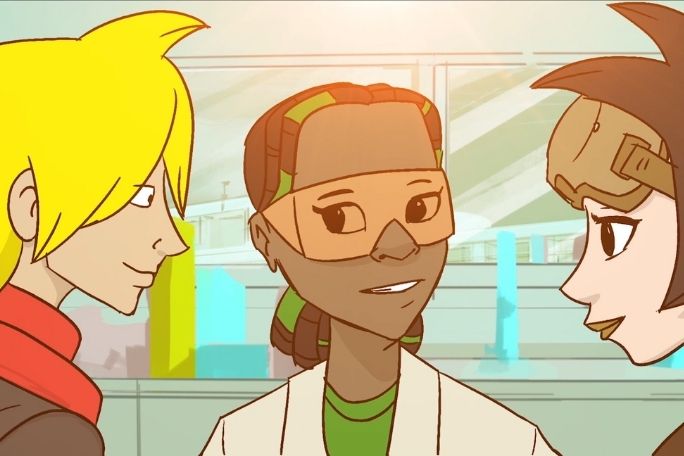Lesson summary
Students investigate the questions we can ask to uncover a problem. After reviewing prior knowledge, students look at the 5Ws (What, Where, Who, Why and When) and work as a class and in groups to apply the 5Ws to a range of scenarios. They then watch Episode 1.2 of the GPS series and apply the 5Ws to help them identify and analyse the problem being addressed in this series. Students summarise their analysis as a paragraph that can be used to guide work throughout the rest of this unit.
Learning intentions:
Students will...
- understand how the 5Ws can be used to guide problem finding and analysis
- understand some of the realities of daily life for people living in Malawi
Success criteria:
Students can...
- pose 5W questions to identify a problem
- apply 5W questions to a range of scenarios
- summarise findings in a paragraph
- work independently and collaboratively
Lesson guides and printables
Curriculum links
Select your curriculum from the options below.
Lesson details
Curriculum mapping
Australian curriculum content descriptions:
Year 3 HASS:
- Pose questions to investigate people, events, places and issues (ACHASSI052)
- Locate and collect information and data from different sources, including observations (ACHASSI053)
- The similarities and differences between places in terms of their type of settlement, demographic characteristics and the lives of the people who live there, and people’s perceptions of these places (ACHASSK069)
Year 4 HASS:
- Pose questions to investigate people, events, places and issues (ACHASSI073)
- Locate and collect information and data from different sources, including observations (ACHASSI074)
- The main characteristics of the continents of Africa and South America and the location of their major countries in relation to Australia (ACHASSK087)
Year 3 English:
- Plan, draft and publish imaginative, informative and persuasive texts demonstrating increasing control over text structures and language features and selecting print,and multimodal elements appropriate to the audience and purpose (ACELY1682)
Year 4 English:
- Plan, draft and publish imaginative, informative and persuasive texts containing key information and supporting details for a widening range of audiences, demonstrating increasing control over text structures and language features (ACELY1694)
Syllabus outcomes: GE2-1, GE2-2, GE2-4, EN2-2A.
General capabilities: Critical and Creative Thinking, Literacy
Relevant parts of Year 3 HASS achievement standards: Students describe the characteristics of different places at local scales. They pose questions and locate and collect information from sources, including observations, to answer these questions.
Relevant parts of Year 4 HASS achievement standards: Students describe and compare the characteristics of places in different locations at local to national scales. They develop questions to investigate. They locate and collect information and data from different sources, including observations to answer these questions.
Relevant parts of Year 3 English achievement standards: Students create a range of texts for familiar and unfamiliar audiences
Relevant parts of Year 4 English achievement standards: Students create structured texts to explain ideas for different audiences
This lesson is part of the wider unit of work Cisco Global Problem Solvers – HASS – Years 3 & 4
Time required: 60 mins
Level of teacher scaffolding: Medium – lead students in guided discussion
Resources required
- Background Information – Season 1 factsheet
- Device capable of presenting a website to the class
- Year 3 Scenario
- Year 3 Scenario – Suggested Answers
- Year 4 Scenario
- Year 4 Scenario – Suggested Answers
- Student Worksheet – one copy per student
Skills
This lesson is designed to build students’ competencies in the following skills:
- Collaboration
- Communication
- Critical thinking
Additional info
These lessons have been developed in partnership with Cisco. Cisco believes that our future will be defined by global problem solvers – global citizens ready to thrive in a connected and digital future by thinking like entrepreneurs, innovating like technologists, and acting as agents of social change.


Welcome back!
Don't have an account yet?
Log in with:
Create your free Cool.org account.
Many of our resources are free, with an option to upgrade to Cool+ for premium content.
Already have an account?
Sign up with:
By signing up you accept Cool.org's Terms and Conditions(Opens in new tab) and Privacy Policy(Opens in new tab).